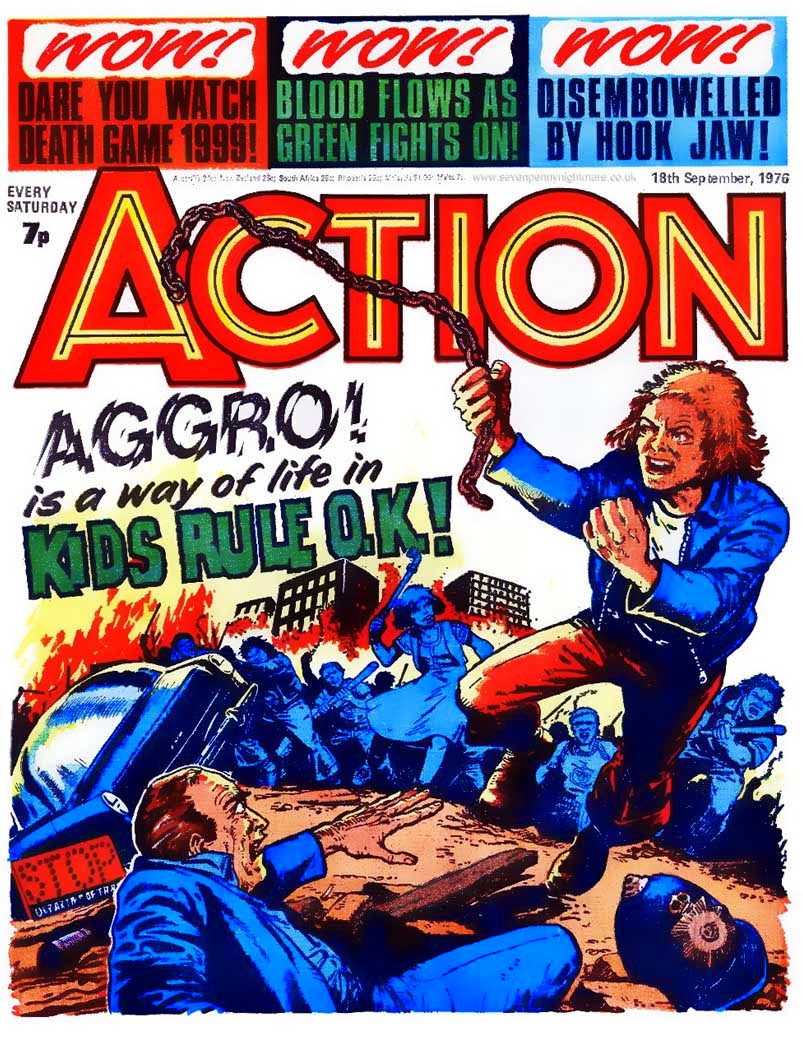‘Rule of Night’ first was published in paperback in the UK in 1975. This Pomona Books reissue (220 pp) was published in 2003, and features an Afterward by the author.
‘Rule’ takes place in the northern England city of Rochdale, in Greater Manchester, ca. 1974. Nowadays Rochdale is notorious for having one of the largest populations of ‘asylum-seekers’ in the U.K., but in the early 70s, it was primarily white and working class, with Pakistani immigrants making up the biggest nonwhite ethnic group.
By the early 70s, the cotton mills that had made Rochdale prosperous in the 19th century had been shut down, and the city was fast decaying into another decrepit factory town.
The protagonist of ‘Rule’ is one Kenny Seddon, sixteen, no longer in school (in the UK you can drop out of school legally at 16), drifting from job to job, and of a sullen and truculent disposition. Along with his younger sister, mother, and father, Kenny lives in an apartment in the 'Ashfield Valley Estate', a public housing complex designed in a dehumanizing, Modernist style reminiscent of the French architect Le Corbusier.
I'm a juvenile product of the working class
Whose best friend floats in the bottom of a glass
For Kenny and his mates - Andy, Skush, Crabby, and Fester – life is all about slogging through low-wage jobs during the week, and drinking it all away in the pubs on the weekends. Perhaps with a fight against Greasers, or Droogs, thrown in, too.
Or petty crime.
Or rolling a Paki.
Kenny is a ‘bovver boy’, a sub-species of skinhead. When out on the town, Kenny wears his hair cut short, jeans hemmed above the ankles, suspenders, and red work boots. This type of style is so utterly different from that of English society at large in 1974, that ‘regular’ people instinctively regard the bovver boy with alarm and apprehension.
bovver boys
(The Punk Movement is still nearly two years in the future: in 1974, John Lydon is teaching woodwork to kids at Finsbury Park; Joe Strummer is busking on the streets of London; and the JoBoxers are in Secondary School [i.e., roughly equivalent to junior high school in the US]).
Slade, mid-70s
A break in the routine for Kenny and his mates is attending Spotland Stadium, home of The Dales, the local football team. If there is an opportunity for a bit of the Aggro, that’s all for the better:
We hate Nottingham Forest
We hate Liverpool too
We hate Man United
But Rochdale we love you !
Author Hoyle relates these adventures - many of which are calculated acts of violence - in a simple, declarative prose style that makes ‘Rule’ a fast, and very engaging, read. Little of the narrative is devoted to deep analysis of Alienated Youth, Social Distortion, or the Plight of the Working Class. Hoyle does provide brief interludes in which the reader is given glimpses into the mind of Kenny Seddon and his dawning awareness that he is destined to be yet another semi-alcoholic member of the Lumpen Proletariat, and nothing more. But these introspective moments are not over-used and support, rather than distract, the narrative.
American readers are going to need to have Google at hand to translate some of the British idioms, slang, and figures of speech; but these of course lend authenticity to the novel and many are amusing as well as informative – for example, juvenile prison inmates from Liverspool use a language (‘Scouse’) that is unintelligible to other Brits…..but one is to be very careful of offending any inmate from Liverpool…..such offence can lead, in turn, to an unpleasant Prison Shower encounter……..
‘Rule of Night’ is a notable work of realistic fiction, and joins its American counterparts, such as Richard Price’s The Wanderers, Kem Nunn’s Tapping the Source, Warren Miller’s Cool World, and Hubert Selby Jr.’s Last Exit to Brooklyn, as a classic representative of the genre.
For anyone fond of realistic fiction, or wanting to understand working-class life in the UK of the 70s, getting a copy of 'Rule of Night' is essential.










































































